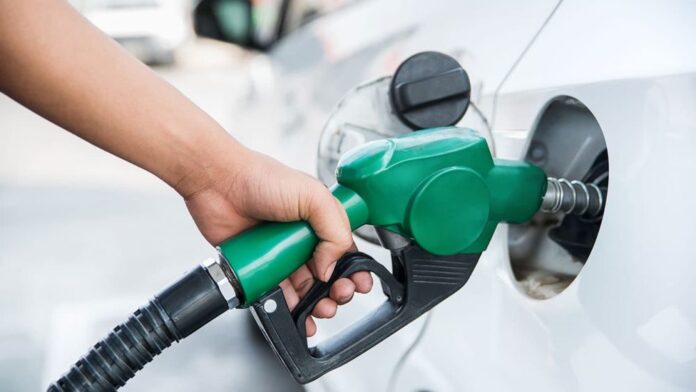Notwithstanding a little loss in currency rates, it is projected that the price of petrol and high-speed diesel (HSD) would drop by around Rs6.50 to Rs7.50 per litre on May 31 due to a negative trend in the global market.
According to knowledgeable sources, during the past two weeks, the price of gasoline and HSD has decreased on the global market by approximately $3.25 and $2.10 per barrel, respectively. This comes after a decrease in fuel and HSD pricing of $8.7 and $4.3 per barrel, respectively, over the preceding two weeks.
The final Inland Freight Equalisation Margin (IFEM) estimate predicts a reduction of Rs7.25 in fuel prices and Rs6.25 in HSD per litre. In the past two weeks, the import premium on gasoline has dropped from $10.30 per barrel to $9.70, a fall of around 7%.
Nonetheless, throughout that time, the rupee’s value relative to the US dollar declined by almost 10 paise. The overall effect is predicted to lower the price of fuel by around Rs7 per litre from the current ex-depot pricing of Rs273.10.
In a similar vein, the price of HSD on the global market dropped by almost $2.10 per barrel, but the $6.50 per barrel import premium paid by the benchmark Pakistan State Oil (PSO) remained constant. As a result, the HSD rate was projected to decrease from the present rate of Rs 274.08 per litre at the depot stage by Rs 6.25 per litre, subject to final exchange rate adjustment and IFEM in pricing.
Authorities said that while the price of HSD had decreased to $97 from $99.12 per barrel, the price of gasoline had declined to around $95 per barrel from approximately $98.27 per barrel earlier on the global market. Furthermore, as of May 16, the cost of fuel and HSD has dropped by Rs. 15.93 and Rs. 7.88 per litre, respectively.
The highest legal amount that may be charged on petrol and HSD is Rs 60 per litre, which has already been reached by the government. In the first nine months that ended on March 31, the government brought in Rs720 billion. In accordance with agreements reached with the International Monetary Fund (IMF), the government had set a budget aim to collect Rs 869 billion as the petroleum development tax (PDL) on petroleum products during the current fiscal year.
Increased costs for energy and petroleum have been a factor in inflation. The middle and lower middle classes’ budgets are directly impacted by the price of gasoline, which is mostly used in private transportation, small cars, rickshaws, and two-wheelers. However, the extremely inflationary HSD prices are largely employed in agricultural engines, trains, and heavy transport vehicles, which further impacts the cost of crops and other necessities.
At the moment, the general sales tax (GST) on all petroleum products is nil, and the government charges around Rs82 per litre in taxes on gasoline and HSD. In addition, the government charges Rs 60 per litre of PDL for both items and Rs 50 per litre for 95RON fuel and high-octane mixing ingredients. Additionally, there is a customs fee of around Rs. 19–20 per litre on fuel and HSD.
With monthly sales of between 700,000 and 800,000 metric tonnes, petrol and HSD are important income producers. In comparison, the demand for kerosene is much lower, at 10,000 metric tonnes.






